Benefits and risks of their use as a management tool
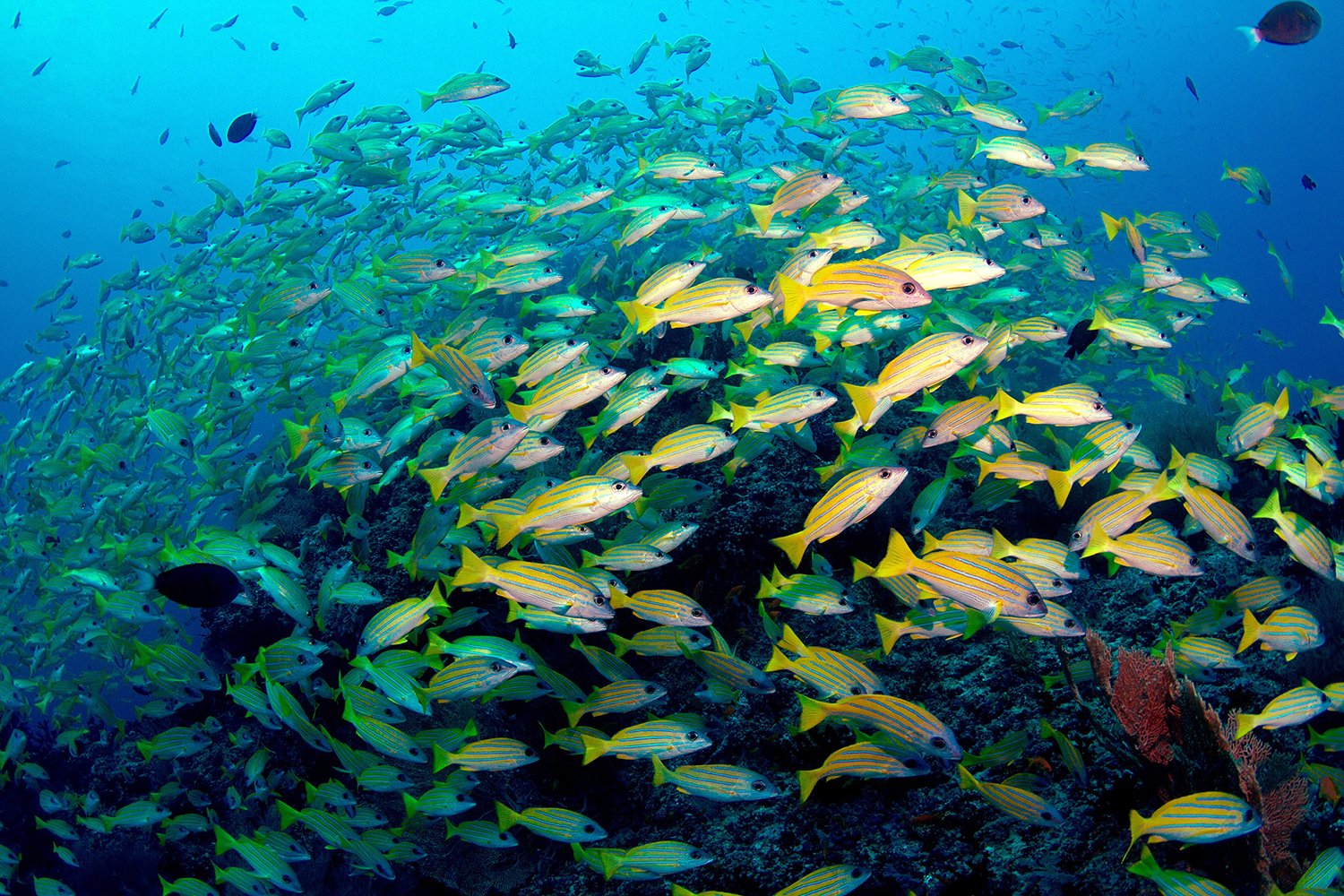
Protected areas limiting resource extraction have become a popular tool for the management of terrestrial, marine and inland aquatic systems. The use of protected areas continues to expand, with a suggested target of 30 percent of the planet to be placed under some form of spatial management by 2030. However, controls and limits within protected areas can vary in the degree to which and for whom the use of resources is restricted.
Although full closures (where extractive activities, and even access, are prohibited) can confer substantial benefits for biodiversity conservation over time, they can also carry substantial costs. These costs may be particularly high in the short term and in areas where people’s livelihoods and food security are dependent on the resources within those boundaries. As a result, in many instances, the total exclusion of people from an area and a total ban on using resources upon which they rely is neither politically nor economically feasible and may incur substantial socioeconomic costs.
Partially protected areas (PPAs), which allow limited extraction of resources from within boundaries, are a widely applied measure that regulates when, how, and by whom harvesting occurs. Partially protected areas now constitute the dominant form of marine spatial management globally (69 percent of all marine managed areas). However, as a management tool, the value of PPAs differs depending on whether the desired outcomes are rooted in conservation or food security and livelihoods and there is mixed evidence of ecological benefits from PPAs.
Differences in governance structures under which PPAs are implemented might also lead to different outcomes. For example, benefits may be more likely when partial protection rules are collectively developed in bottom-up or collaboratively managed (often referred to as co-managed) systems, which tend to receive high levels of legitimacy and compliance, compared with when the same rules are dictated by top-down systems.
This article – adapted and summarized from the original publication (Smallhorn-West, P.F. et al. 2022. Hidden benefits and risks of partial protection for coral reef fisheries. Ecology and Society 27(1):26) – reports on a study of co-managed coral reef systems to illustrate the fisheries benefits and risks of partial protection under these regimes. Authors assessed how three fisheries indicators – potential fisheries productivity, individual fish catchability and intrinsic vulnerability – in PPAs compare with openly fished areas and/or those under full protection across three case studies from Pacific Island nations.
Even with Pebble Mine dead in the water, mining-fishing collisions may be inevitable
Study setup
Three case studies of partially protected coral reef fishery systems were examined to evaluate the benefits and risks of their use as a management tool. Data used came from community-based management arrangements in three Pacific Island countries to demonstrate three vignettes of how partial protection can boost fisheries production, enhance the ease with which fishers catch their prey, and alter the composition of fisheries yields. Topics studied were (1) potential fisheries productivity in Tonga; (2) individual fish catchability in Vanuatu; and (3) intrinsic vulnerability to catch in the Solomon Islands (Fig. 1).
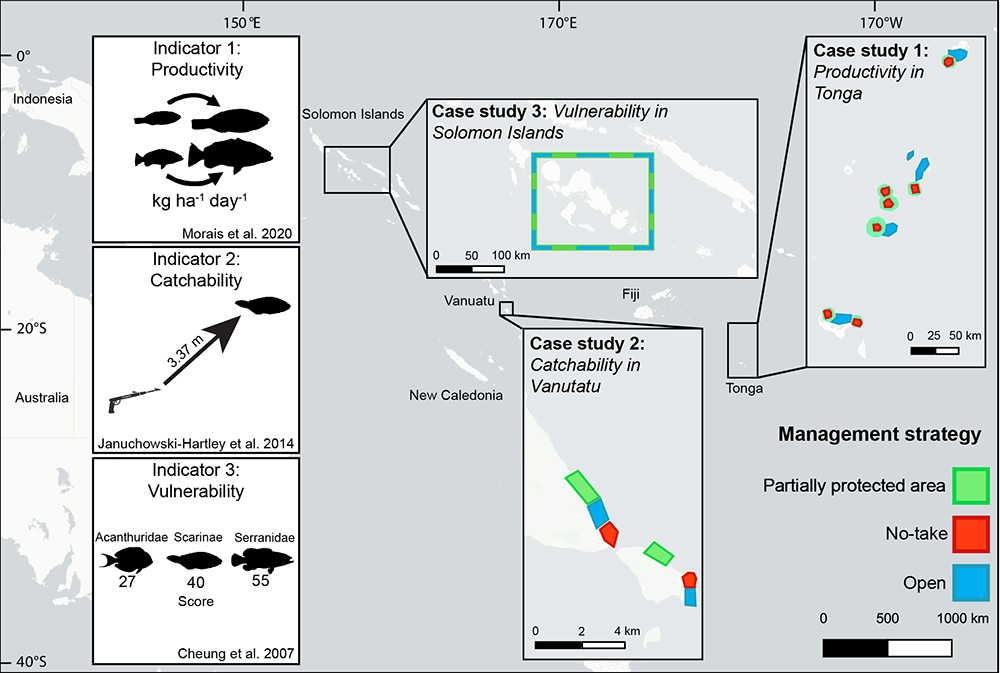
Examining these three cases does not reflect a fully crossed sample design; the data in each case were suited to assess only one of the available indicators. However, the findings from each case represent ways in which PPAs can affect fisheries performance and are hence useful to explore in conjunction, despite limitations on extrapolating these findings across other systems (as also occurs in most studies of individual cases). For detailed information on data collection and analysis, refer to the original publication.
Results and discussion
Case study 1: productivity in Tonga
The surveys in Tonga reveal that both the no-take reserves and PPAs have significantly higher potential fisheries productivity compared with control areas (Fig. 2 a, b). Target reef fish productivity was approximately 60 percent greater inside PPAs (1.06 kg/ha/day) where fishing is still allowed by community members, and in no-take reserves (1.20 kg/ha/day), compared with statistically matched control sites open to fishing (0.64 kg/ha/day, and 0.76 kg/ha/day, respectively). In contrast, significant differences in standing biomass of target species were only observed for no-take reserves, when compared with openly fished areas and PPAs (Fig. 2 c, d).
Case study 2: catchability in Vanuatu
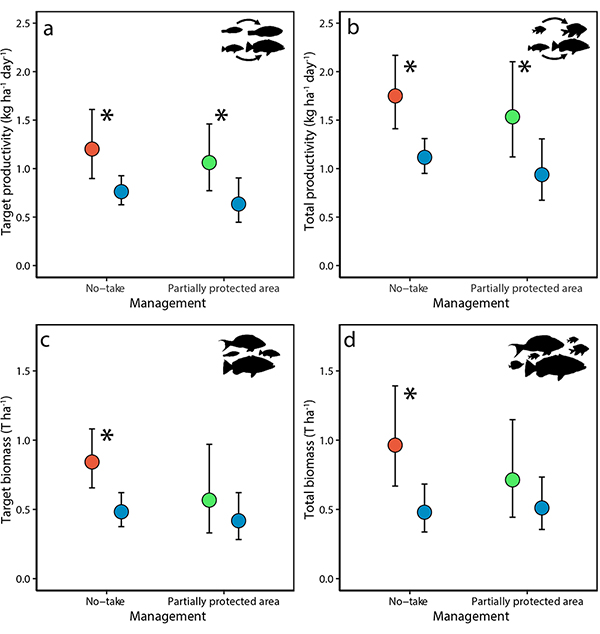
The surveys revealed size dependency in the catchability of fish of the family Acanthuridae and subfamily Scarinae between management strategies (Fig. 3). As fishing restrictions increased (from openly fished reefs to PPA to no-take reserves), so too did the probability of approaching to within spearing range of individuals.
For example, for a 22-cm (total length, TL) surgeonfish (the mean size of Acanthuridae in this study), the probability of approaching to within capture range was 0.22 (0.12–0.39) on open reefs, 0.56 (0.40–0.70) in a PPA, and 0.85 (0.72–0.93 95 percent confidence limit) in a no-take zone (Fig. 3). Likewise, for the mean size of parrotfish (26 cm TL), on open reefs, it is predicted that 1 in 10 (probability of success 0.11, range 0.04–0.26) approaches would be successful, whereas in PPAs the rate was 1 in 2 (0.48, range 0.34–0.63), whereas for no-take reserves 8 in 10 approaches (0.82, range 0.74–0.89) would be successful. Considering the upper and lower range of spearing distances (respectively 3.6 and 3.05m) did not affect overall trends.
Case study 3: vulnerability in Solomon Islands
Analysis of the five most commonly caught fish families revealed substantial changes in the composition of catches harvested from the PPAs (Fig. 4a). Over the 10-year study period, the proportion of the most commonly caught fish family, Acanthuridae (31 percent of total catch across the 10-year period), declined from 54 percent to 3 percent on periodically harvested reefs. Concurrently, the proportion of epinephelid (grouper) species (9 percent of total catch) appearing in catches from the PPA increased from 4 to 34 percent.
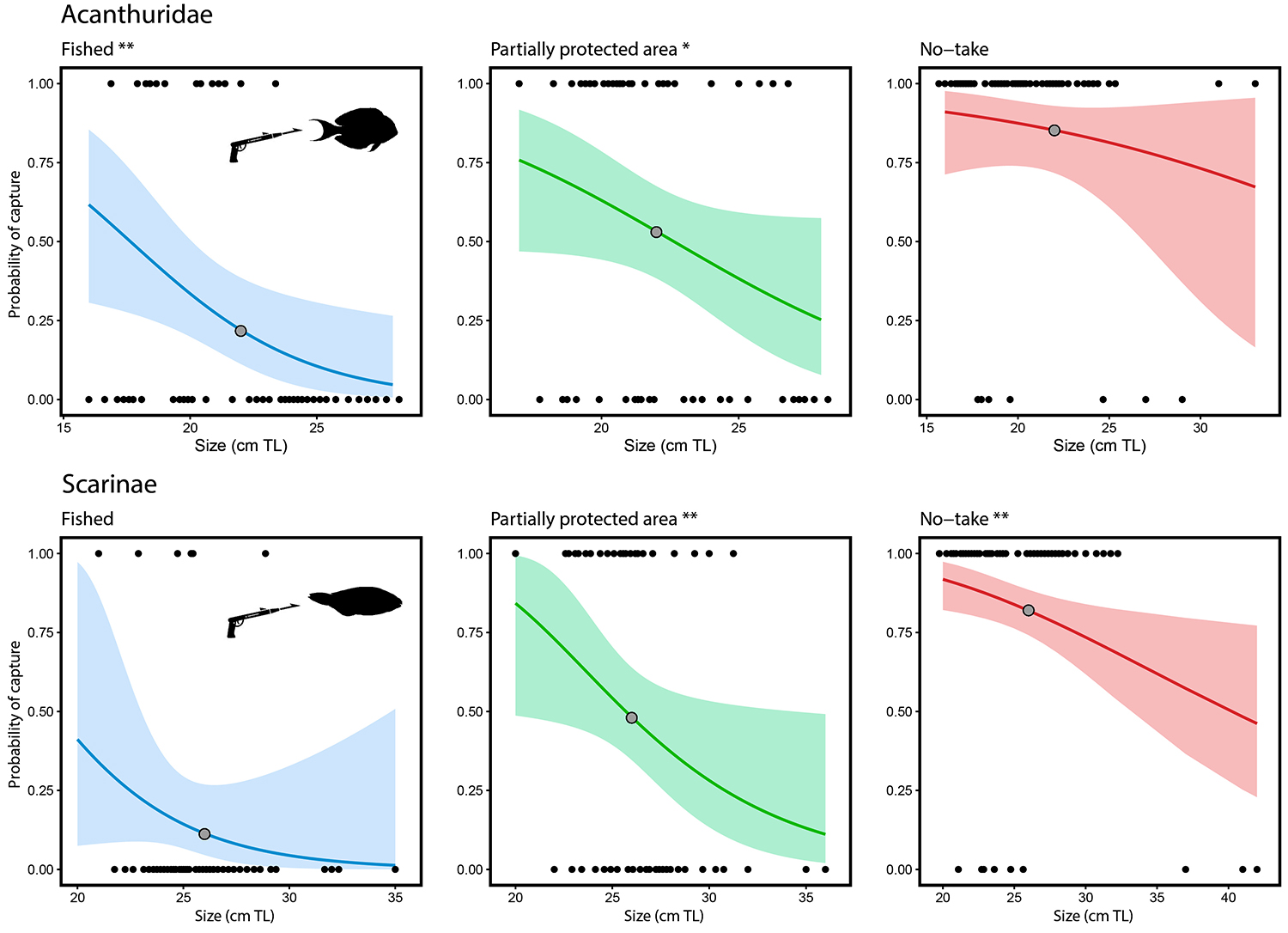
Additional analysis demonstrated that these changes were also consistent for absolute numbers of individuals caught, with the mean number of acanthurids caught per trip in PPAs declining from 8.5 to 0.26, whereas epinephelids caught in PPAs increased from an average of 0.77 to 2.42 per trip. These changes were not evident on reefs that were continuously open to fishing year-round. Changes in catch composition through time also altered the overall life-history characteristics of the catch.
By examining nearly 3,000 observations across three Pacific Island nations, results bring to light three ways (productivity, catchability, and vulnerability) in which partial protection can influence the use and sustainability of natural resources. In the Tonga case study, we found that potential fisheries productivity was higher within PPAs, which suggests the volumes that fishers can harvest has been enhanced. In the Vanuatu case study, the implementation of PPAs made individual fish easier to catch by spear, which should endow fishers with greater harvesting efficiency.
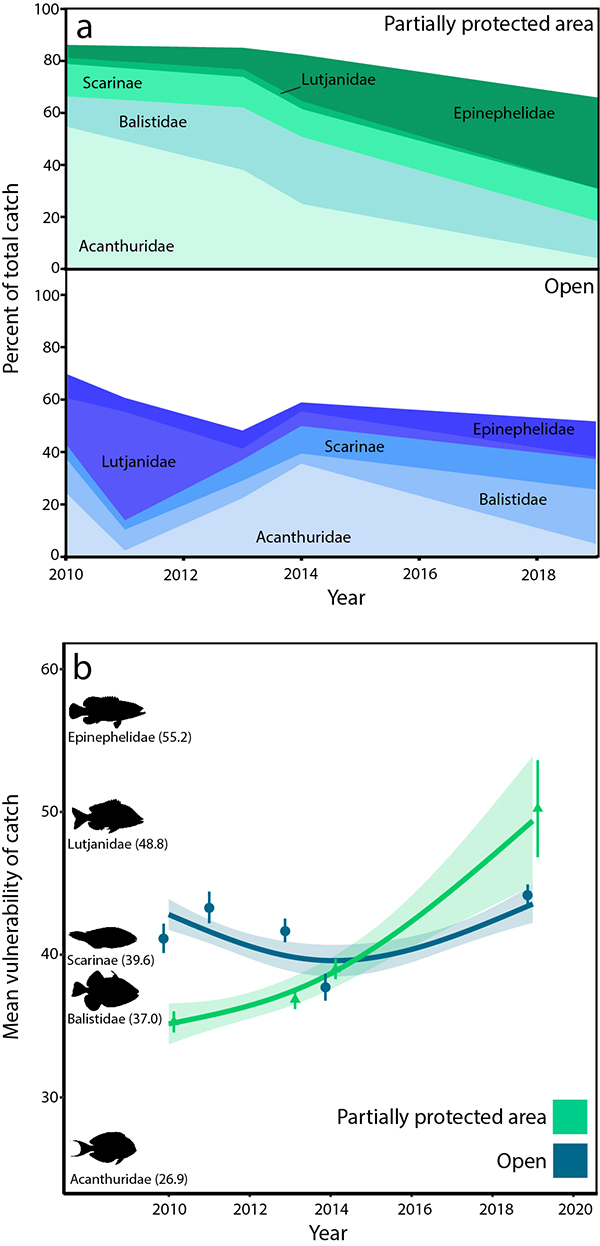
However, increased catchability can also make target species more susceptible to overfishing if additional controls on effort or catch are not in place. In the Solomon Islands case study, the composition of catch changed over a decade of management with partial protection and became dominated by species more intrinsically vulnerable to over-exploitation. Each of these vignettes illustrates distinct benefits and risks that can be managed through the adaptive aspects of co-management that respond to feedback and learning between resources and their users.
We find that although partial protection can confer clear benefits to fishers and fisheries, such as improvements in productivity and catchability, this management approach can also amplify certain risk. Size-dependent changes in fish behavior within PPAs are likely to induce a form of hyperstability, where yield and abundance become decoupled and catch may remain stable even while populations decline. Hyperstability is normally associated with aggregating species, such as the North Atlantic cod, a fishery that collapsed as a result. If fish behavior within PPAs changes faster than populations recover, with larger individuals within PPA boundaries becoming easier to catch than smaller fish beyond their boundaries, catches of large fish within PPAs may reflect increased tameness rather than abundance.
These risks creating a false perception of growth and stock recovery where catch samples are not indicative of true population status. Second, the proportional increase in the catch of vulnerable species within PPAs over a decadal timescale in itself suggests a potential risk, as the original objectives of management may not have planned for these changes.
Adaptive co-management of PPAs is one mechanism by which to mitigate the associated risks – that of hyperstability and over-exploiting vulnerable species – while gaining the fisheries benefits of partial protection. The adaptive nature of management implies an iterative process of changing management practices based on new experiences and insights, such as monitoring, in order to steer the managed system toward a desired state.
In our cases, adaptively managing the risks associated with PPAs involves adjusting the periodicity of closures and openings (e.g., from once every six months to once every year, or from once every year to once every two years), as well as the intensity or methods of exploitation (e.g., bag or size limits, or restrictions to specific fishing methods), which in our case studies are typically changed based on social needs and demands instead of being grounded in sustainability of the resource being used.
Regardless of the exact mechanism involved, the long-term sustainability of PPAs is likely to be contingent on feedback mechanisms that enable management to adapt to changing circumstances and stock characteristics.
Employing both fisheries-dependent and independent data in the same location over decadal time scales to examine how these novel indicators interact would substantially improve our understanding of pathways to impact from marine management. We also acknowledge that observations from case studies tend to be strongly context-dependent, and producing generalizable knowledge claims requires expanding observations and inferences from individual case studies beyond the spatial and/or temporal boundaries from which they were originally produced.
Furthermore, we focused here on the fisheries outcomes of PPAs, but additional socioeconomic implications, as well as those pertaining to ecological integrity, function and conservation outcomes, are also crucial to understand. Lastly, quantifying levels of poaching and compliance, and their potential impacts on our findings, were beyond the scope of this study.
Perspectives
Our study adds to the nuance and complexity of protected areas as a tool for the management of natural resources. We demonstrate that, in certain instances, partial protection is able to confer changes to fisheries performance – by changing ecosystem dynamics, how fish behave and what people catch. But we also acknowledge the net effect of these changes is mixed, and further considerations are also needed beyond fisheries indicators. Even with positive fisheries benefits, other stakeholders in managed marine systems could be adversely affected by PPAs if those fisheries benefits come at the cost of nature.
Conservation issues also continue to persist, and hence fully closed no-take managed protected areas must remain an integral part of spatial management, for both the positive conservation and fisheries impact they can supply. Lastly, only a small portion (>1 percent) of the global area under management is done through bottom-up or co-management institutions, and it remains unclear whether some or all of these indicators would be similarly affected by a top-down governance framework.
With effective management, these vignettes suggest that co-managed or community-oriented PPAs therefore can provide specific benefits for fisheries, but only so long as the potential risks are clearly understood.
Now that you've reached the end of the article ...
… please consider supporting GSA’s mission to advance responsible seafood practices through education, advocacy and third-party assurances. The Advocate aims to document the evolution of responsible seafood practices and share the expansive knowledge of our vast network of contributors.
By becoming a Global Seafood Alliance member, you’re ensuring that all of the pre-competitive work we do through member benefits, resources and events can continue. Individual membership costs just $50 a year.
Not a GSA member? Join us.
Author
-
Patrick Smallhorn-West, Ph.D.
Corresponding author
Postdoctoral Research Fellow, Wildlife Conservation Society; WorldFish, Townsville, Australia[32,117,97,46,117,100,101,46,117,99,106,64,116,115,101,119,110,114,111,104,108,108,97,109,115,46,107,99,105,114,116,97,112]
Tagged With
Related Posts
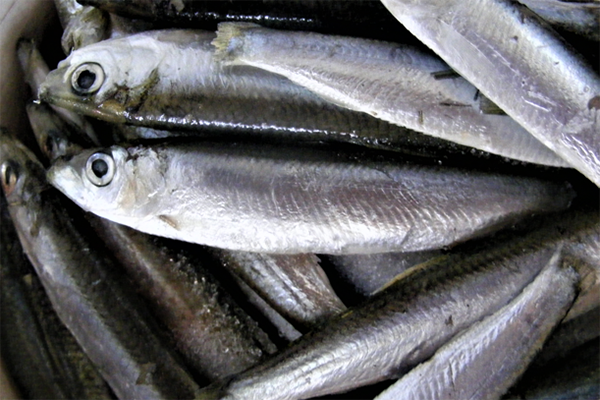
Responsibility
Coastal fisheries management and novel modeling
Coastal fisheries management that includes a spatially relevant set of abiotic and biotic factors is likely to improve sustainable fisheries programs.
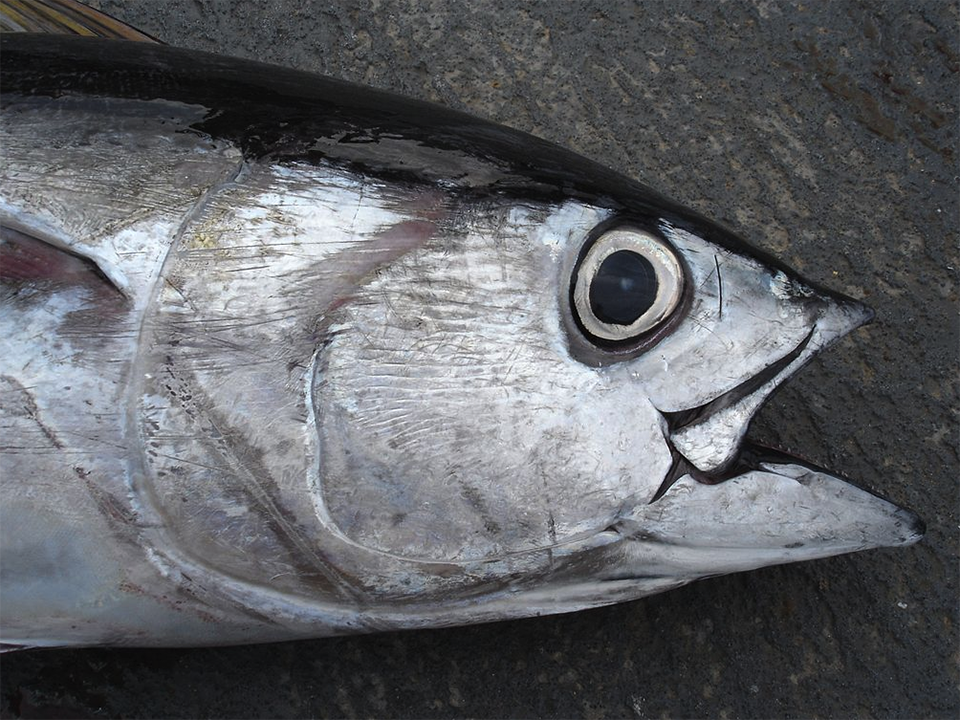
Fisheries
Fisheries in Focus: Marine protected areas don’t help tuna population, new paper shows
Using stock assessment and fishing data, researchers find that the Phoenix Islands Protected Area did not meaningfully increase the tuna population.
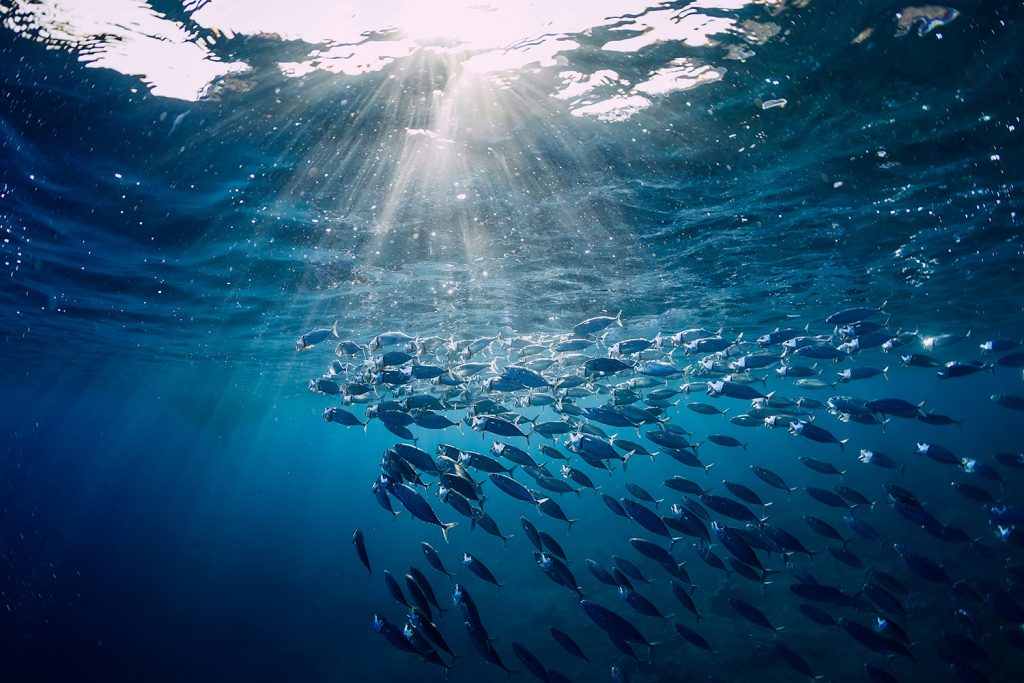
Fisheries
Fisheries in Focus: Tunas and billfishes are improving on the IUCN Red List – and it’s thanks to effective fisheries management
Sustainable Fisheries UW offers a rundown of the IUCN Red List and how tunas and billfishes benefit from strong fisheries management.
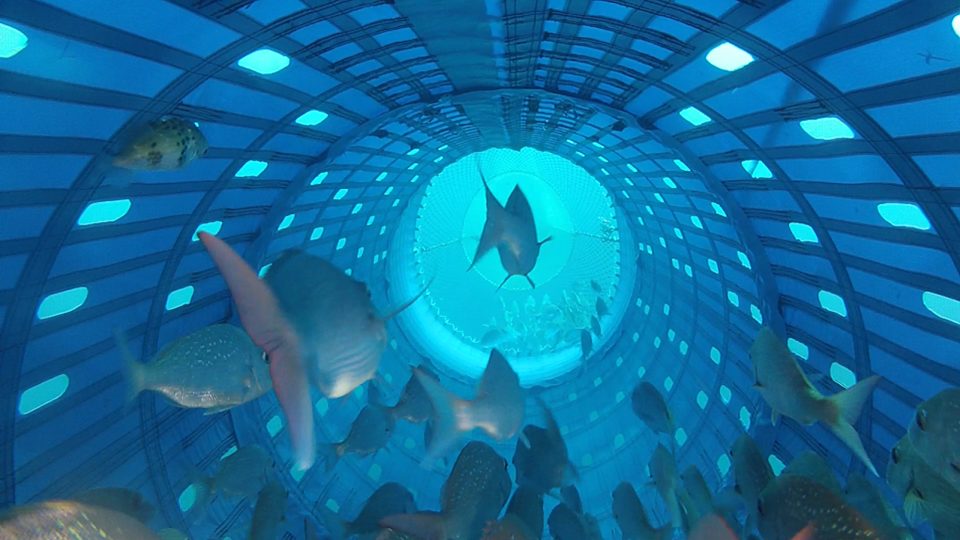
Fisheries
‘We were just looking for a way to fish better’: How one partnership is reinventing commercial fishing nets to reduce bycatch and improve animal welfare
Precision Seafood Harvesting’s novel reimagining of commercial fishing nets provides innovative solutions to both bycatch and animal welfare issues.



